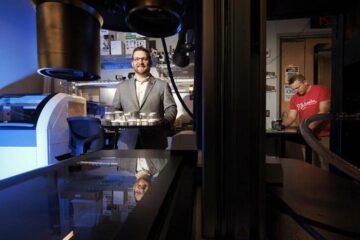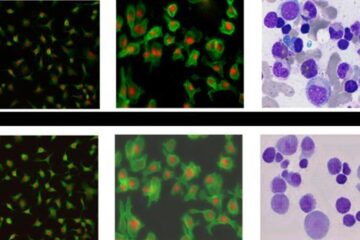Researchers measure field strength and density of ICF implosions

In the most recent research, which appears in the Feb. 29 issue of the journal, Science, Ryan Rygg of Lawrence Livermore National Laboratory and colleagues from the Massachusetts Institute of Technology and the University of Rochester used radiography with a pulsed monoenergetic proton source to simultaneously measure field strength and area densities by looking at the energy lost by protons during the implosion.
Inertial confinement fusion (ICF) is a process where nuclear fusion reactions (which release copious amounts of energy) are initiated by heating and compressing a fuel target, typically in the form of a spherical shell containing a mixture of deuterium and tritium. Upon completion of the National Ignition Facility laser, fuel will be compressed a thousand-fold by rapid energy deposition onto the surface of a fuel target.
At the OMEGA laser in Rochester, the team blasted 36 laser beams that deposited 14 kilojoules of energy in a one nano-second pulse into ICF fast-ignition capsules. (A nanosecond is one billionth of a second). To observe the dynamics of the imploding capsules, Rygg radiographed the targets before and during implosion. Radiography typically uses X-rays to view unseen or hard-to-image objects, but radiography using protons is sensitive to different phenomena.
The radiographic images showed the presence of complex, filamentary magnetic fields, which permeate the field of view, while a coherent centrally directed electric field is seen near the capsule shell, which had imploded to half its initial radius.
“By measuring the evolution of this coherent electric field, we could potentially map capsule pressure dynamics throughout the implosion, which would be invaluable in assessing implosion performance,” Rygg said. “The striated fields may provide a snapshot of structures originally produced inside the critical surface at various times during the implosion, which would open the door for evaluating the entire implosion process.”
Media Contact
More Information:
http://www.llnl.gov/PAOAll latest news from the category: Physics and Astronomy
This area deals with the fundamental laws and building blocks of nature and how they interact, the properties and the behavior of matter, and research into space and time and their structures.
innovations-report provides in-depth reports and articles on subjects such as astrophysics, laser technologies, nuclear, quantum, particle and solid-state physics, nanotechnologies, planetary research and findings (Mars, Venus) and developments related to the Hubble Telescope.
Newest articles

Bringing bio-inspired robots to life
Nebraska researcher Eric Markvicka gets NSF CAREER Award to pursue manufacture of novel materials for soft robotics and stretchable electronics. Engineers are increasingly eager to develop robots that mimic the…

Bella moths use poison to attract mates
Scientists are closer to finding out how. Pyrrolizidine alkaloids are as bitter and toxic as they are hard to pronounce. They’re produced by several different types of plants and are…

AI tool creates ‘synthetic’ images of cells
…for enhanced microscopy analysis. Observing individual cells through microscopes can reveal a range of important cell biological phenomena that frequently play a role in human diseases, but the process of…





















